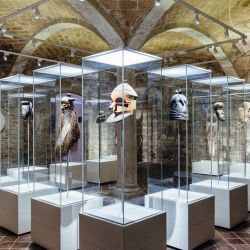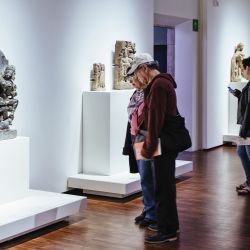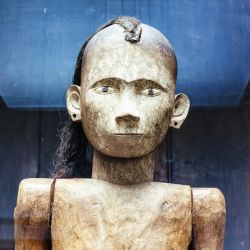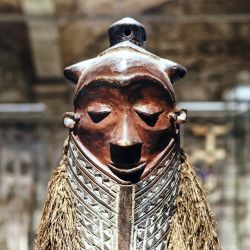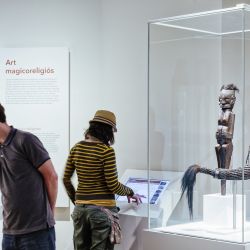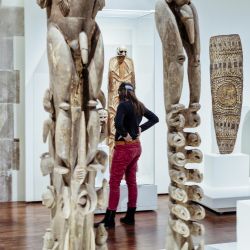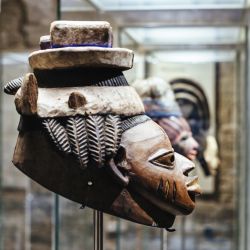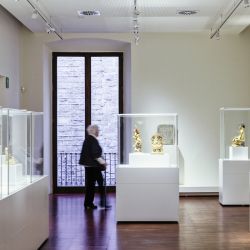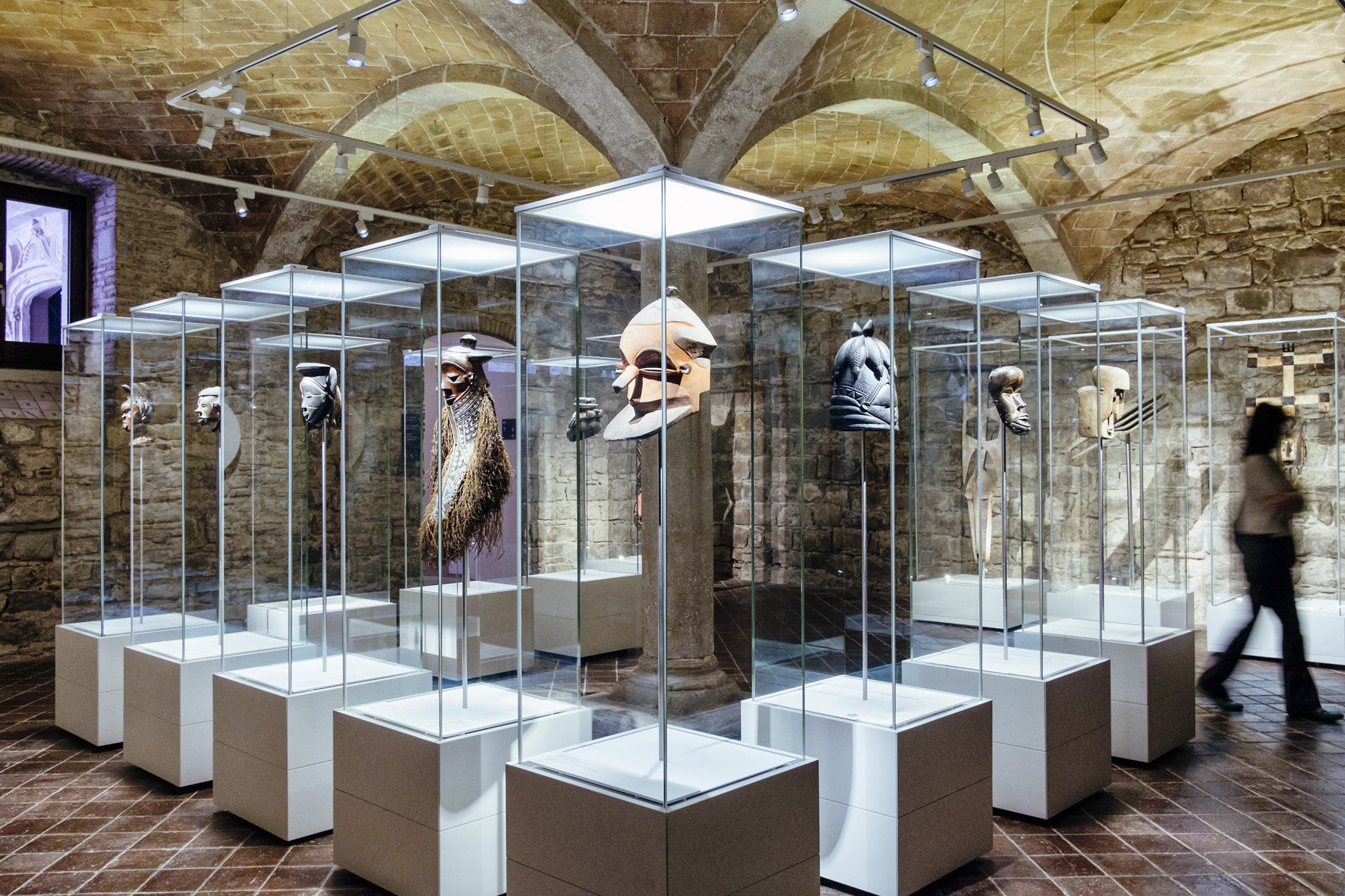
Download this article:
The Museu de Cultures del Món (Museum of World Cultures) in Barcelona presents outstanding works from around the world in medieval Catalan buildings. Architecture and art are set off perfectly thanks to the ERCO lighting tools Optec and Pollux.
A death mask from Ghana, a Buddha statue from Burma, an incense holder from Guatemala. The Museu de Cultures del Món serves as a platform of preservation and presentation of artistic heritage and knowledge of cultures from Asia, Africa, America and Oceania. The permanent exhibition shows a quintessential selection of around 500 works, such as an “Apa’apai” club from Polynesia which was brought to Europe in the 18th century by seafarer and explorer James Cook.
Located on Carrer de Montcada, a street known for its beautiful historic buildings, the Museu de Cultures del Món is set in the Casa Nadal and Casa Marquès de Llió, two medieval Catalan houses with a history that extends far back through the centuries. While the Casa Nadal follows the common model of a medieval palace, with central courtyard, a gallery on the upper floor and a façade with a tower, the Marquès de Llió Haus corresponds to the structure of an upper class residence dating from the 8th century and also comprises a central courtyard, gallery and tower, as well as an impressive staircase. Extensive restoration and renovation was required to convert these two houses to their current use, which involved joining the two separate buildings into one.
The lighting design for the Museu de Cultures del Món was executed by Antonio Sainz from Haz Luz 17. His main challenge was to illuminate the historic buildings and artefacts in such a way that architecture and art both came into their own without competing with each other. This achievement was made possible using the ERCO lighting tools Optec and Pollux, which feature specially developed photometric systems that enable the luminaires to be adjusted precisely for optimum beam alignment. As an added consideration, the exhibits needed to be presented so as to allow the observer to lose themselves in their own contemplation. ERCO LED technology renders objects in brilliant colours and brings out every nuanced hue of the materials and patterns of each item. Importantly, it also satisfies the stringent conservational criteria applied to precious historic artefacts that are easily damaged by excessive exposure to light, as the LED light guarantees a spectrum free of IR and UV components for optimal protection of the artwork.
With a number of exhibits displayed in glass cabinets, the concept includes ambient and accent lighting from the outside to avoid disturbing reflections. Additionally, because the temperature in these cabinets needs to remain constant for conservational purposes, ERCO LED lighting tools are the ideal solution thanks to their heat dissipation to the rear of the luminaire. Taller cabinets were, in some instances, used with frosted glass covers to help guide the light for optimum visual comfort. When the directed light of a spotlight penetrates the semi-transparent material, it creates diffuse ambient lighting with precision accents. This approach is used at the Museu de Cultures del Món, for example, to set off a collection of African masks with uniquely expressive illumination.
Project data
Project: Museu de Cultures del Món, Barcelona / Spain
Lighting design: Haz Luz 17, Barcelona / Spain
Photography: Sebastian Mayer, Berlin / Germany
Products: Optec, Pollux
Photo credits: © ERCO GmbH, www.erco.com, photo: Sebastian Mayer
About ERCO
The ERCO Light Factory in Lüdenscheid is a leading international specialist in architectural lighting using LED technology. The family business, founded in 1934, now operates as a global player with over 60 subsidiaries, branches and agencies in over 40 countries worldwide. Since 2015 ERCO's portfolio has been 100% LED. Inspired by "light digital" as its leitmotif, ERCO in Lüdenscheid develops, designs and produces digital luminaires with focus on photometrics, electronics and design. Working closely with architects, lighting designers and engineers, ERCO develops lighting tools used primarily for applications in the following fields: Work, Shop, Culture, Community, Hospitality, Living, Public and Contemplation. ERCO understands digital light as the fourth dimension of architecture - providing highly precise and efficient lighting solutions to support creative designers in turning their visions into reality.
If you require any further information on ERCO or image material, please visit us at www.erco.com/presse. We can also provide you with material on projects worldwide for your media coverage.
Relevant image material
© ERCO GmbH, www.erco.com
© ERCO GmbH, www.erco.com
© ERCO GmbH, www.erco.com
© ERCO GmbH, www.erco.com
© ERCO GmbH, www.erco.com
© ERCO GmbH, www.erco.com
© ERCO GmbH, www.erco.com
© ERCO GmbH, www.erco.com
© ERCO GmbH, www.erco.com
